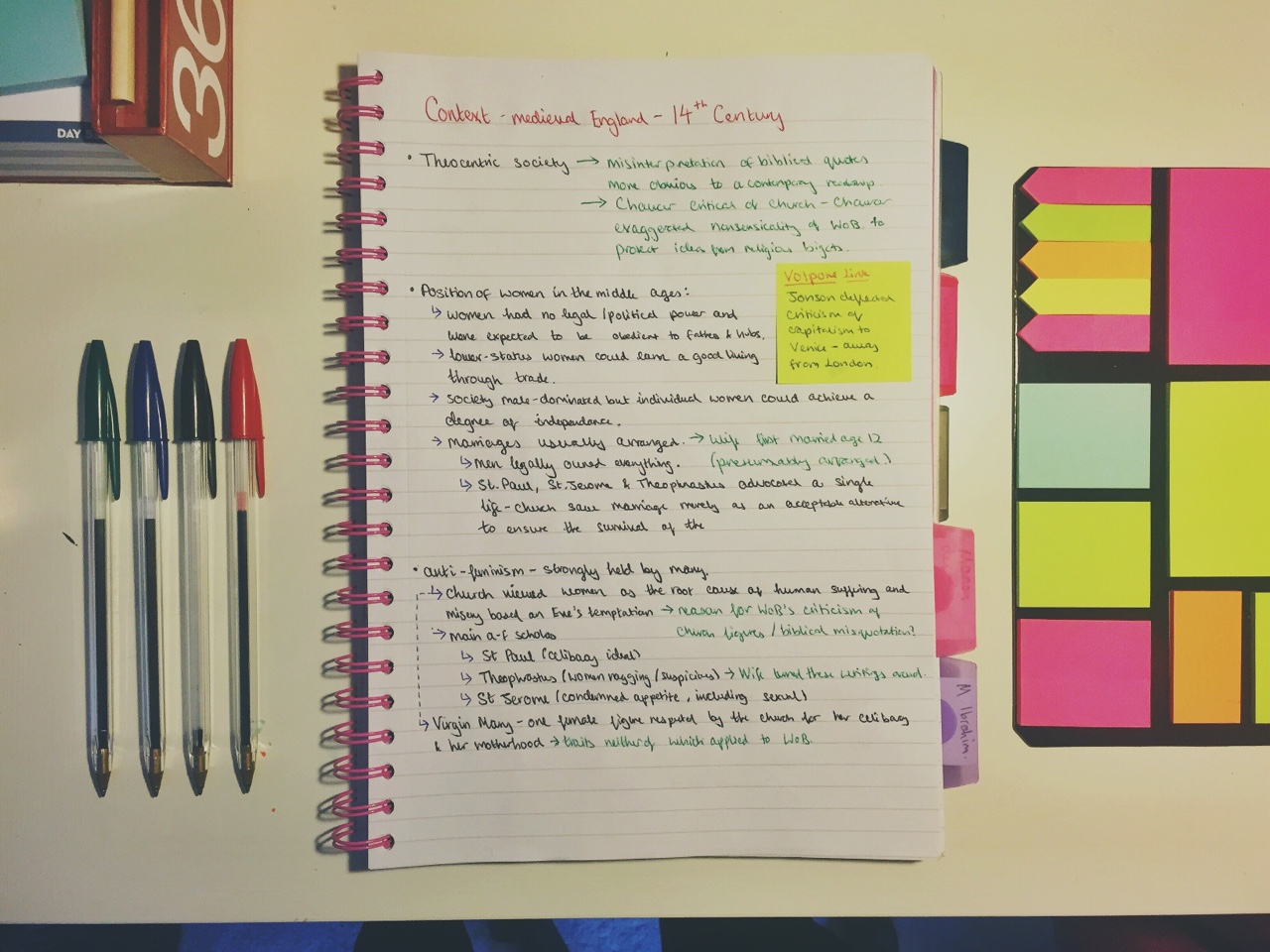
In our last post in our series on the skills and habits of successful students, we gave evidence for why reading and note-taking must be completed prior to the topic being discussed in class by teachers and classmates. Taking notes prior to class discussion jump starts the process of digesting and encoding information in the text for long-term storage and retrieval. Bringing one’s prepared notes to class discussion frees up the mind and attention so that the student may listen intently and process the information and also get clarification about topics that were not clear upon first review. Additionally, notes that are completed prior to class discussion can subsequently be edited and added to if new or different information is given by the teacher.
Highlight notes to indicate what is important and emphasized by the teacher
There is a second rationale for completing notes prior to class discussion which was not covered in the previous post. Notes that are prepared prior to class discussion can be highlighted to indicate the importance of the topics. Teachers will usually cover most of the ideas that will be on upcoming tests during class lectures and discussions. Successful students, possessing notes made prior to class lectures, can mark and highlight their notes to indicate those topics that have been reviewed by the teacher in class. These topics will very likely be on the test.
Further, the most aware students pay close attention to the teacher’s cues and look for gestures and changes in voice pitch to understand the most essential ideas. These points, especially when the teacher emphasizes a point physically or with raised pitch or when the teacher says, “this is important!” will absolutely be covered on the test.
Students who mark in their notes those ideas reviewed by the teacher in class and those points especially emphasized, have a map as to which ideas to focus upon when preparing for the test. With notes that are ordered in terms of teacher emphasis and by their relation to the main ideas in the chapter, a student can avoid the unproductive cramming that most students utilize.
 The typical student treats all ideas as equal in importance and wastes time and precious mind-space studying inessential details. He or she will spend hours re-reading and working to memorize key points and terms. By contrast, the successful student will calmly and efficiently review his or her notes in the day(s) prior and arrive on test day with confidence and ease. Real academic confidence comes from knowing that one has mastered every important piece of information to be encountered on the test.
The typical student treats all ideas as equal in importance and wastes time and precious mind-space studying inessential details. He or she will spend hours re-reading and working to memorize key points and terms. By contrast, the successful student will calmly and efficiently review his or her notes in the day(s) prior and arrive on test day with confidence and ease. Real academic confidence comes from knowing that one has mastered every important piece of information to be encountered on the test.
